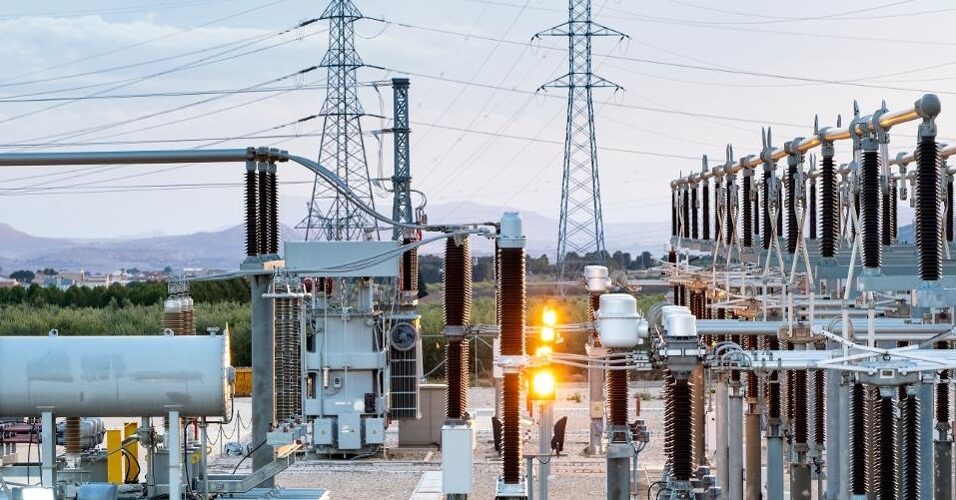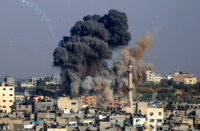5 min read
Summary: Electricity is one of the key facilities for economic growth and development. Sadly, its generation, distribution, and transmission has not been sufficient, given the continuous vandalization of electricity facilities across the country. This emphasizes the importance of evaluating the electrical sector and presenting long-term solutions for power facility protection.
Abstract
This research work investigated the protection of critical infrastructure in Nigeria with special attention to electric power infrastructure within Federal Capital Territory (FCT), Abuja. The study was guided by six research questions and the instrument employed for the research was titled ‘Evaluation of the Effectiveness of Protection of Critical Infrastructure’ (EEPCI). The study was carried out among the consumers of electricity in three of the six Area Councils, the security personnel employed to guard as well as the workers of the power facilities called Abuja Electricity Distribution Company (AEDC) and Transmission Company of Nigeria (TCN) in the capital territory. The entire population of the study was 3,750 and this cut across the strata of the stakeholders in the power industry. The data gathered were analyzed by the use of frequency, percentages and statistical mean distribution technique. Findings from the study showed that the existing protection techniques are weak, unassertive and the power companies are slow to mitigate the effects of attacks on their facilities. Based on the findings, the researcher recommended that policies and equipment protection strategies be utilized by the power companies and the government. The study laid emphasis on the establishment of community anti-crime groups and the provision of a free toll hotline for emergency purposes. Furthermore, the penalty for damages to power facilities was recommended to be stiffer and the security should be empowered to excel in their profession.
Introduction
Effective protection of power infrastructural facilities is panacea to nation’s security, economic vitality, public health and safety. The central goal of effective protection of critical infrastructural facilities is therefore to secure, prevent, neutralize or mitigate the effects of accidental or deliberate efforts by terrorists plan to destroy, incapacitate or exploit the facilities. When these infrastructural facilities are safe and effective then development is assured. Ola, (2010) was of the opinion that sustainable development is attainable with solid infrastructural base. Availability of critical infrastructure for public usage is susceptible to natural and man-made attacks. Badiora and Obadiora (2011) were of the opinion that deficit in supply of infrastructure is actually worsened by man-made activities and there is need to plan for protection.
Protection of infrastructure may include building resiliency around the facility, installing security systems and initiating countermeasures (Janes 2014). In the global, United Nations Development Programmes’ (UNDP) Human Development Index ranking (HDI) of 2004, 2005, 2006 and 2008, the National Bureau of Statistics (NBS) ranked Nigeria low because of infrastructure deficit. The establishment of the Nigeria Security and Civil Defence Corps (NSCDC) was therefore one of the measures to protect critical national assets and infrastructure (CNAI) and was supported by NSCDC Act 2003 and amended NSCDC Act of 2007. The Act therefore is a confirmation about the sincerity and commitment of the Federal Government to protect critical national assets and infrastructure (CNAI) in Nigeria.
Critical infrastructure on its own may include communications; emergency services; energy sector; dams; food; public services; industry; health; transport; gas; public communications, radio and television; commercial facilities; chemical and nuclear sectors. Many facilities were classified as critical infrastructure by the Federal Government of Nigeria through the office of National Security Adviser (ONSA) to the President. Going by definition, the word “critical” refers to infrastructure which, if disabled or destroyed, would result in catastrophic and far-reaching damage. According to European Commission, critical infrastructure was defined as an “asset or system which is essential for the maintenance of vital societal functions”. The Canadian Organization for Economic and Cooperation Development (OECD) defined critical infrastructure protection as a cyclical process incorporating prevention, detection, mitigation, response and recovery (OECD 2008). According to the ‘Risk Management Approach’ of the OECD, the best protection result is gotten when surveillance and access management to the facility is adequately implemented. At this juncture, a brief mention of the concept of protection involving crime prevention through environmental design (CPTED) has employed in this research should be explained. The concept according to (Paulsen & Robinson, 2004) involve hardening of critical infrastructure targets, deterrence, punishment of accused persons, better illumination and lighting up of targets of vandalism. Similarly, knowing your neighbour and the use of surveillance to protect vulnerable targets as suggested by Laurence (2011) was equally applied.
The fact that energy sector has domineering influence to upshot the deliverables from all other critical infrastructure accounts for it vulnerability; and it is important to note that production and supply of electrical energy relies on complex system which includes but not limited to gas pipelines, flow stations and refineries where Oil and Gas is the source of fuel. When it comes to transmission of the generated energy, attention is shifted to electrical energy pylons, tower member, Injection stations and substations.
Electrical power facility as a critical infrastructure in Nigeria was divided into Power Generating, Transmission and Distribution sections. Although there are many Steam-Power Generating Stations, Gas-Power Generating Stations and Hydro Power Stations, but there exist one transmission company known as Transmission Company of Nigeria (TCN) and eleven Power Distribution Companies in the country. All these companies are privately owned except the Transmission Company of Nigeria (TCN).
In protecting critical infrastructure, the responsibility for setting goals rests primarily with the government, but the implementation of steps to reduce the vulnerability of privately owned and corporate assets depends primarily on private-sector knowledge and action.
Statement of the problem
Electricity is the most vital of the critical infrastructure and key resources that support our society. It is the overall cure for economic helplessness and solution to the security of businesses, properties, public and private life. Electricity is so important but its generation and transmission in Nigeria cannot be guaranteed for the fact that it is constantly under attack while its distribution is regularly vandalized. By the same token when considering the users’ end, energy theft is continuously being witnessed and all these put together give rise to irregular power supply, jeopardizing ease of doing business and the concomitant effect is hardship and inconveniences to the entire populace. The purpose of this study therefore is to investigate the energy sector as a subdivision of critical national assets and infrastructure and evaluate how it is being protected in Nigeria.
Discussion and Implication of Findings
This study revealed the presence of modest protection technique around power facilities like a transformer, transformer substations, distribution networks and Injection substations in FCT, but proving this inadequacy is beyond the scope of this research work. The study also made it known that the FCT community people are prepared to support the protection of power facilities in their domain, they are fully prepared to mitigate the effects of attacks on power facilities and in support of the idea of stiffer court penalties against all forms of damages to power facilities. The study further revealed that the existing vandalism protection technique on the power transmission network facilities within FCT is meek, unassertive and far below average for relying much on government and benevolence of the community and little from the company’s staff. In conclusion, if we win in our mission to protect power facilities, then our growth will be certain!
Recommendations
This research work investigated the effectiveness of protection of critical infrastructure in Nigeria; with special reference to the protection of power facilities in Federal Capital Territory (FCT) Abuja. The study recommended equipment/system as well as policy strategic techniques in the protection of power facilities. The recommended policies on strategy techniques included stiffer penalty verdicts with reference to abrogation of the option of fines and criminalizing the possession of copper material. This is achievable by lobbing for amendment of these laws to prevent intentional and accidental damages to power facilities in FCT. Other policies under this category are the establishment of community anti-crime group (Phillip, Lewis and Todd 2005) and the provision of a free toll hotline for emergency purposes. The combination of government security with community anti-crime group is achievable if the government and the company can coordinate the relevant stakeholders. The provision of functional electronic surveillance monitoring gadgets and the Transformer Risk Management Insurance scheme is another policy strategy worthy of consideration. On equipment and system strategy policy, the study recommended that high capacity distribution transformers covering larger area should be replaced with numerous smaller pole-mounted power transformers with a view to making vandals’ access to it difficult and also that attacks on these transformers would become localized since resulting power outage would be limited to a smaller area.
Recommendation(s):
The adoption of policies with stiffer sanctions for the protection of infrastructures. Achieving this would require lobbying for the amendment of existing laws to prevent intentional and accidental damages to power facilities.
About the Author:
Saladin Quadri Adigun – National Open University of Nigeria, Special Study Centre, Civil Defence Academy Sauka, Abuja, Nigeria
Source: CORE
Keywords: Protection; effectiveness, critical infrastructure; evaluation, power facilities; Electricity Company













